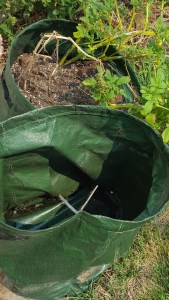Crop Rotation, Succession Planting, and Companion Planting
Planting a home food garden takes more work than plopping in seeds and watering. Planning the garden is a critical component. However, some of the most important planting techniques can conflict. Primarily, I am talking about crop rotation, succession planting and companion planting. While the first two seem to go hand in hand, the last of the three can make planning and implementing a garden tricky. If, that is, you want to keep the soil healthy.
Crop Rotation
The best way to keep soils happy and pests at a minimum is to practice crop rotation. I have seen charts for various cycles of planting. Some involve rotating through a cycle of three years and others for four years. Also, some rotation plans include a fallow season. Currently the big garden is designed for a four-year cycle. I best remember the cycle with the chant Root, Fruit, Leaf, Legumes. The rotation follows the line. Thus, a fruit crop follows the space a root crop was in, the leaf crop goes behind the fruit, the legumes behind the leaf and the roots follow the legumes. Sounds easy enough, but that does not allow for succession planting in some of the row. Nor does the sequencing allow for companion planting.

Succession Planting
Succession planting has multiple definitions. One involves growing a late season crop after an early crop. For example, both radishes and spinach are usually finished by early June. This gives plenty of time to plant a second crop. Following the rotation chart, the next crop should be from the fruit or legume family as the case may be. But now your row is no longer consistent from within.
Another type of succession planting is placing plants with different harvest dates side by side. An example would be putting beets and butternut squash side by side. The winter squash takes much longer to grow and develops above ground in contrast to the root vegetable which will be harvested at a much earlier date.
Companion Planting
I use the technique of companion planting throughout my yard. I have garlic planted at the base of my fruit trees. In theory, this wards off borers. Also, my tomatoes are grown side by side with both onion and basil. One can see quite easily what this latter grouping does to crop rotation. But I still plan to rotate the rows in the big garden.
In addition to preserving soil nutrients, crop rotation helps battle pests. The flea beetles were aggressive this year. Even though the rutabagas and broccoli were planted in different rows, the little bugs attacked both. I certainly don’t want to plant the rutabaga in the same place next year.
So far, no signs of squash bugs, but I know they are lurking somewhere. If all my squash were next to each other, they would just chomp down the row. Thus companion planting is essential to my gardening.
Garden Compromise
My intentions are to loosely follow a crop rotation through the rows. So, next year the tomatoes, peppers and eggplants will reside where the beets are now. I will still inter-plant the basil and the onion alongside the tomatoes. The plants are too happy not to. I do plan to take very close notes and lots of pictures. Sometimes I lose my sketched garden plans from one year to the next, so it helps to have photos.
Succession planting will still occur. Our late spring, early summer heat triggers bolting by June for some of the early crops. I do not want to have a lot of the rows idle. However, I will try to follow a mini crop rotation with the succession planting. Perhaps I will follow the radishes with tomatillos next year.
We eat from our garden all summer long. The health benefits are only outweighed by just how great fresh fruits and vegetables taste. To insure the garden keeps producing, we will combine the various techniques of crop rotation, succession planting and companion planting to keep both plants and soil thriving.








































































 April 2018
April 2018





















 Last year I planted purple potatoes for the first time. I love them and they are very nutritious. They thrived in the sandy soil. This year I decided to experiment with growing potatoes in a bag.
Last year I planted purple potatoes for the first time. I love them and they are very nutritious. They thrived in the sandy soil. This year I decided to experiment with growing potatoes in a bag.

















